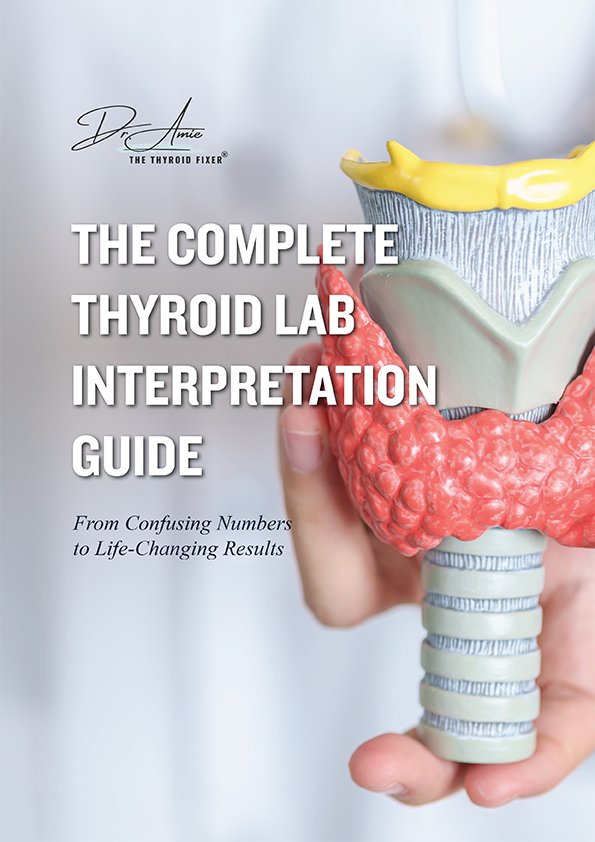Click Here for Your FREE Thyroid Lab Interpretation Guide
Your Labs Are “Normal”… So Why Do You Feel Terrible?

Sick of Hearing “Everything Looks Fine” When You Know It’s Not?
If you’ve ever walked out of your doctor’s office feeling dismissed because your labs are “normal” but you feel absolutely terrible, you’re not alone. Being told “It’s all in your head” or “maybe you’re just stressed” when you’re battling crushing fatigue, brain fog, or stubborn weight gain is frustrating and heartbreaking. The truth is, standard thyroid tests miss far too many problems – and you deserve answers.
The Reality: 20 million Americans have some form of thyroid dysfunction, yet 60% of them remain undiagnosed. That’s a massive number of people suffering needlessly. Chances are, if you’re a health-conscious woman in your 30s, 40s, or 50s who still feels awful despite “normal” labs, your thyroid could be the missing puzzle piece.

“I can’t even count how many times I walked out of my doctor’s office in tears. Every single time, they told me my labs were ‘normal’ — as if that explained why I couldn’t get out of bed, why my hair was falling out, why I felt like a stranger in my own body.”
— Sarah M., 42
Take your health back into your own hands.
Learn how to decode your labs, spot red flags your doctor might miss, and finally get the answers you deserve.
The Hidden Thyroid Problem Doctors Are Missing
Modern medicine often uses outdated tests and standards that leave many women misdiagnosed or simply dismissed. Here’s why you might be feeling miserable even though your doctor insists “everything is fine”:

TSH-Only Testing
Most doctors only check TSH. That misses up to 80% of thyroid problems. It’s like trying to understand a movie by only watching the opening credits.
“Normal” Isn’t Optimal
“Normal” lab ranges are too broad to catch real issues. Calling that normal is like saying a D- and an A+ are the same grade. These ranges are based on sick populations, so “normal” just means not dying—not feeling great. Normal ≠ Optimal.
Misinterpreted & Misdiagnosed
Because of those loose ranges, real thyroid problems are missed. A TSH of 3.8 may be “in range,” but it’s a red flag. Most women are sent home anyway.
Outdated Perspectives
Too many providers still dismiss symptoms: “You’re just stressed.” “You’re getting older.” “Maybe it’s depression.” This lazy thinking keeps women from getting real answers.
The Result
Women with thyroid dysfunction are left feeling unheard and hopeless. Doctors don’t look at the full picture, and you keep suffering with symptoms that steal your energy, confidence, and joy.
Meet The Complete Thyroid Lab Interpretation Guide – Your Roadmap to Answers
You deserve to know what’s really going on in your body. That’s why we created The Complete Thyroid Lab Interpretation Guide – a FREE downloadable PDF that finally makes sense of your confusing thyroid labs and shows you how to advocate for the care you need. It’s like having a thyroid-savvy best friend (who happens to be a medical expert) walk you through your labs step by step.
The Complete Thyroid Lab Interpretation Guide is a comprehensive, expert-crafted PDF that makes understanding your thyroid labs easy. It’s packed with real-world analogies, eye-opening charts, and step-by-step guidance to empower you as your own health advocate. Best of all, it’s absolutely free — our gift to help you reclaim your health.

